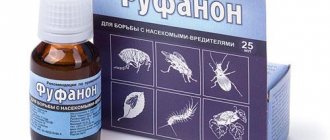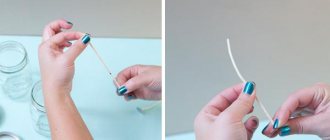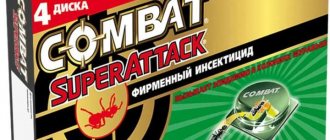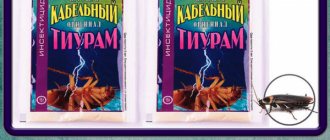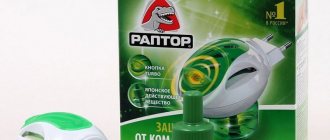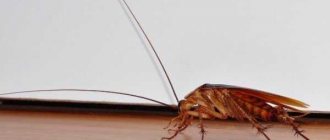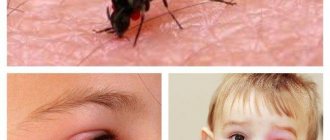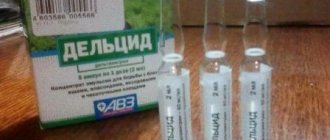A fly fumigator protects your living space from the invasion of winged insects. It is a small device that repels pests with odors and insecticidal substances. The devices differ in their mechanism of action, effectiveness, and application. When choosing the best one for yourself, you need to study the instructions, rules of use, and range of action. There are fumigators that are undesirable to use in a home with small children and animals.
Description and principle of operation
A fumigator against flying insects (mosquitoes, flies, midges) is a small plastic device with a heating element connected to an electrical network.
Fumigators differ in size, shape, coverage radius and active substance, however, their design and operating principle are approximately the same. The heating element located inside the housing comes into contact with the insecticide located on solid plates/tablets or liquid in a small bottle.
When plugged into the socket, the heater increases the temperature of the insecticide carrier and volatile compounds that are toxic to flying insects begin to evaporate from the surface of the latter. The process of killing pests with toxic fumes is called fumigation.
Chemicals used in fumigators can be natural (eg, pyrethrins found in plants) or synthesized (pyrethroids, thiamethoxam).
The device itself
The duration of exposure of flies to the device depends on the type of insecticide carrier: from several hours (plate) to a month (liquid). If the consumption of a toxic solution can be monitored by its residues in the bottle, then the plate loses color when used. If it is completely discolored, then it is time to insert a new one for the device to operate effectively.
Fumigators work in enclosed spaces; as a rule, one device is enough to get rid of flies from 15-18 square meters. m of housing.
There are also fumigators in the form of spirals that need to be set on fire. Recommended for outdoor use.
Effect of fumigator on insects and people
Toxic vapors of evaporating active substances (insecticides) have a nerve-paralytic effect on flies and their larvae, inhibiting the functioning of the insect's nervous system. In addition, flies lose their sense of smell and insects cannot find food.
In fumigators, the concentration of toxins is sufficient only to destroy and repel light flying insects. They do not have any harmful effects on larger organisms. However, if a person is allergic to the components of fumigants, headache, drowsiness, weakness, and skin rashes may occur (this also applies to pets).
Fumigators work silently and practically odorless (sometimes it can smell like chamomile or light incense).
Amazing pendant
Suspension plates against flies and midges "Mukhoyar" act in exactly the same way as window ones. The only difference is that you can place them anywhere using any available means. Hanging insecticidal plate against flies and midges
How to use
- Bend the plate so that the working surface with the black and white pattern is on the outside.
- Hang it in places where flies congregate, securing the edges if necessary with double-sided tape placed on the colored side.
Types of devices
Electric fly fumigators come in plate and liquid types.
Fumigator with plates
Small rectangular plates (or tablets), packaged in blisters of 8-10 pieces, are impregnated with insecticide, which are inserted into a special niche above the ceramic heating element of the fly fumigator.
With plates
The plates, when heated, emit vapors containing a natural or synthetic toxin, paralyzing the nervous activity of flies. The device begins to operate 8-10 minutes after being plugged into an electrical outlet.
It should be noted that the indoor fly fumigator only works effectively when the windows and doors are closed. After using it, it would be a good idea to ventilate the room.
Fumigator with liquid
The toxic liquid is packaged in 60 ml bottles, which are opened and screwed into a special hole in the fumigator. The operating principle is similar to that used in plate devices: the fumigation process is started using a heater. Typically, liquids contain both natural and artificial chemicals (at a concentration of 1.6%) as active ingredients, which have a nerve-paralytic effect on flying insects. The device, in accordance with the instructions, can be left plugged in for no more than 8-10 hours at a time.
Using fumigator liquid to control flies is a more economical option compared to wafers or tablets, since one bottle usually lasts for a month, while wafers are used up quickly. In addition, the area of the room protected by such a device can reach 20 square meters. m.
Fly coils
Such products are considered pyrotechnic fumigators, which, unlike electric ones, are best used outdoors. Spirals are made from compressed porous materials (usually wood flour) impregnated with toxic insecticides.
The package is opened, the spiral rings are straightened and placed on the stand. To start working, you need to set the fumigator on fire at one end and keep it smoldering. The smoke carries fumes that are toxic to flies several meters around.
The wind will not be able to extinguish such a spiral, which can smolder for up to 8 hours, so you can safely enjoy your outdoor recreation without annoying insects.
Spiral
Xiaomi VH-328 Mosquito Killer Lamp
Xiaomi VH-328 Mosquito Killer Lamp destroys flies, mosquitoes and other insects. The device lures them with its light, and the built-in fan draws the pests inside the trap. The air flow is strong enough that neither mosquitoes nor flies can resist it. The device operates almost silently, so it can be left on even overnight.
Compact dimensions and sleek design help the trap lamp fit into any interior. Photo: xi.express
The Trap Lamp is available in white or black and is made from durable ABS plastic. During operation, the device emits a light purple glow, so it can serve as a night light. To turn on the lamp, just press one button on the body.
Most popular means
Almost all well-known brands produce fumigators to combat flies.
Mosquitall
Electrofumigators from Moskitol are often equipped with a timer to automatically turn the device on and off, as well as a fan to dispel toxic fumes at certain intervals.
Liquid devices use two-component formulations that simultaneously act against flies and mosquitoes. The bottle lasts for one and a half months. Plates for fumigators based on the active ingredient pyrethrum are also produced.
The brand is known for producing special children's fly protection products that are also suitable for adults with allergies.
Fumitox
Fumitox from flies contains prallethrin (a chemical analogue of the toxin from Caucasian chamomile), antioxidants and solvents based on organic substances. This is a highly effective and safe product and is completely odorless.
The bottle of liquid that comes with the fumigator is enough for a month of use. The device is equipped with a rotating fork.
Raptor
The Russian-made fumigator of the Raptor brand produces fly plates that begin to act within 5 minutes after plugging the device into the outlet. The device can operate in standard and turbo modes.
Raptor produces plates that contain:
- Vaportrin - 15 mg/plate;
- prallethrin - 5 mg/plate.
Liquid from "Raptor" is also popular; the main active ingredient in it is etok, and one bottle lasts for 1.5-2 months.
Raptor
Raid
The fly repellents from this manufacturer are absolutely odorless and are impregnated with the plant toxin pyrethrum. They not only kill flies, but also prevent them from appearing in the room.
Raid liquid contains the toxin prallethrin, a bottle lasts for a month.
Fumigators from this company are equipped with a regulator that increases or decreases the intensity of fumes.
Where do midges come from in an apartment?
Midges can appear in any place where conditions favorable to them are observed:
- temperature above 16 degrees,
- high humidity,
- a large amount of food.
In summer they can live in the wild, but in the cold season they hide in human habitats - in wine cellars, fruit warehouses and vegetable warehouses, in residential buildings. Midges can appear in the kitchen very simply - they lay eggs on food in the store, and a person brings them home. Once in suitable conditions, insects begin to reproduce at tremendous speed - each female lays more than 50 eggs at a time.
https://youtube.com/watch?v=44PkxuKGWJ8%3Ffeature%3Doembed
Factors contributing to the spread of midges in the kitchen:
- Violation of the rules for storing vegetables and fruits. If you do not put food in the refrigerator, insect eggs quickly hatch and midges begin to multiply. The cold quickly kills them,
- Storing spoiled fruits. Rotten fruits and vegetables begin to emit an odor attractive to midges. To prevent this, food that has begun to spoil should be thrown away immediately.
- Long-term storage of food waste. Garbage should be taken out daily
- High humidity,
- Storing pet food in an open container. You shouldn’t leave a cat or dog’s half-eaten lunch—it’s bad for raising the animal and for keeping your home safe from midges.
If midges do appear, you need to get rid of them as soon as possible. Not only are they unpleasant neighbors, but they also carry a number of infectious pathogens.
The habitat of small insects is damp rooms and spoiled foods. Midges can get into an apartment in various ways.
- Vegetables or fruits purchased at the market or store may be contaminated with insect eggs. In the warmth, larvae emerge from them and begin to grow and reproduce.
- A midge that accidentally flies into a window can find a suitable place to lay eggs in rotting fruit, vegetables, a used tea bag, a clogged drain, and even in cereals.
- Insufficient trash bin hygiene can also cause small midges to appear in the house.
- Ideal habitat conditions for midges are the cages of pets. They can reproduce in leftover food or in aquarium water that has not been changed for a long time.
- One of the reasons for the spread of insects can be indoor plants. Their excessively abundant watering creates a favorable habitat for fungus gnats - black flies, whose larvae feed on plant roots, thereby causing great harm to indoor flowers.
- Midges can also come from kitchen vents.
If you leave a plate of fruit on the table for a while or don’t remove the trash in time, you can almost immediately see a swarm of annoying creatures circling around. Where do they come from, and at any time of the year?
Midges appear in the apartment as follows:
- Midges prudently lay eggs on growing, filling vegetables and fruits. Therefore, when you buy your favorite product, you automatically bring midges into your home. In order for them to hatch and go through all stages of their development, favorable conditions are necessary for them. And room temperature and the rotting environment correspond to this. If, for example, the fruit spoils a little, the mechanism of development of the fly will immediately start.
- They may enter the house by accident and find a suitable place to lay eggs. It could be anything: fruits, berries, spilled kefir, clogged sewerage, garbage not thrown out on time, etc.
- A good place for breeding: remains of dried pet food, litter not thrown away in time, sawdust, sand, etc.
- Flooded or infested indoor plants favor the breeding of midges. With excessive watering, black flies appear, the larvae of which harm the plants.
- Old clogged ventilation ducts - midges can easily penetrate through them from neighbors.
Precautionary measures
Despite the low concentration of toxic components in fumigator substances for humans, they must be used according to the instructions and safety rules must be followed:
- give preference to odorless plates and liquids;
- use the fumigant only for a certain time specified in the instructions;
- It is not advisable to use near beds to avoid drying out the throat mucosa;
- Be sure to ventilate the room after using the device;
- Do not allow children near the fumigator, do not use it in a room with aquariums;
- use sockets closer to the floor.
Plates, tablets and liquids that have expired should not be used.
Danger to humans and animals
Raptor mosquito repellent products
This substance is classified as low-hazard. When used correctly, it does not cause deterioration in well-being or discomfort. The liquid and plates contain a minimal amount of it. Harm to humans and animals is excluded; for mosquitoes the dose is lethal.
On a note!
To avoid increased concentrations of insecticide in the air, it is not recommended to use Raptor in rooms that are too small - less than 5 square meters. In large rooms, to increase the effectiveness of the drug, several fumigators should be turned on in different sides of the room. Otherwise, a person is faced with a situation where Raptor does not help.
Do not use the product in a room where children under 3 years of age sleep. The ban is associated with the baby’s weak immune system, and the development of individual intolerance is possible. Bio Raptor is produced separately in the form of liquid, Nekusaika plates. The composition includes a natural substance - chamomile extract called pyrethrum. It has a slight specific smell, absolutely safe for small children. Used in the same way, the liquid lasts for 40 days.
